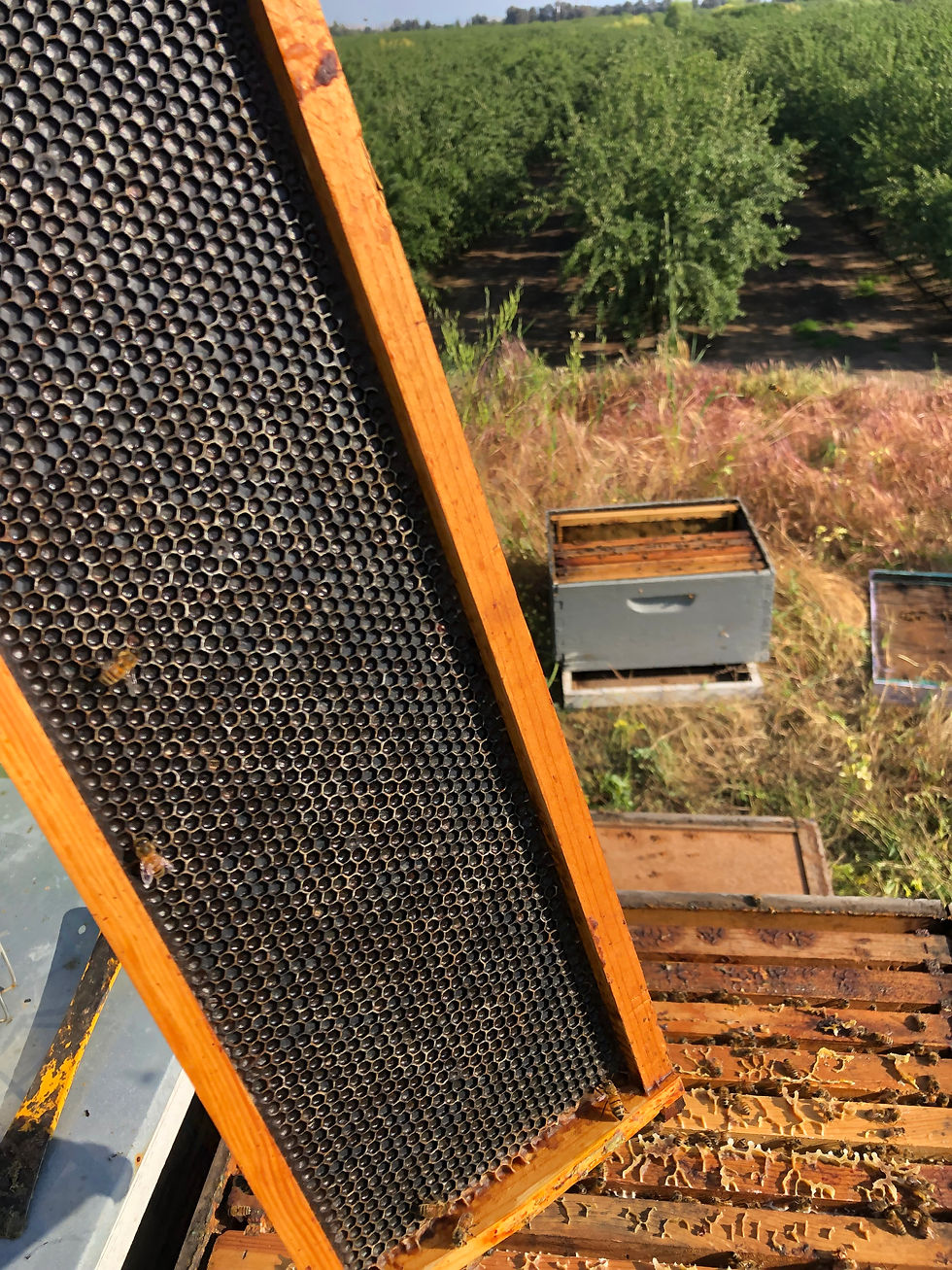Part 1 Spring Bee Keeping Activities - It's All in the Honey Comb!
- Kristy Klitz

- Apr 24
- 3 min read
Updated: Jun 11
Spring is an exciting and BUSY time of the year for bee keeping. Wildflowers and Citrus trees are in full bloom, and the bees are busy collecting all the Nectar to make LOTS of delicious pure honey.
You may be wondering, how do bees store honey in a bee hive? The simple answer is that they build honey comb, of course.

It has been observed that bees are a bit of hoarders. If they have the extra space, they will store extra honey that they don't really need, just in case they need it down the line. Can any hoarders reading this relate? Haha. As a bee keeper, you want to actually encourage this God-given trait (in bees, not people haha) that is a great blessing to us and give the bees plenty of extra space to store honey. This is what we call the bee keeper's honey!
There are a variety of different ways to do encourage the bees to make honey comb. I'm starting to experiment with some other methods, but I mostly use what is probably the most basic method, by using plastic "frames" that have a coat of wax on them so it makes it easier for the bees to build nicely drawn honey combs in the hive to store all that surplus honey.
If you don't wax the frames first though, and just put them in the hives with only the plastic coating, the bees will likely not build honey comb on those frames. The trick though is to get just the right amount of wax on the frames.


We are still learning what just the right amount of wax is. I purchased some used equipment this year, that appeared to have enough wax already left over on the frames. So I decided to take the chance, and save some money and time that it would take to add more wax. Well, after about 3-4 weeks during prime honey-making time, some of those frames remained "undrawn" by the bees, meaning no honey comb was built.


This past week, I added another layer of wax to those frames that weren't drawn out yet by slowly and methodically swapping them out. Thankfully though, the bees built honey comb on most of the frames, so it wasn't too big of a task to replace the ones not drawn out yet.
Once the bees fill the frames with honey, you simply remove the frames from the bee hives and harvest it using a honey extractor!


We will show the harvesting process in Part 2 of Spring Bee Keeping Activities, so stay tuned!
Blessings, Jeff






Commentaires